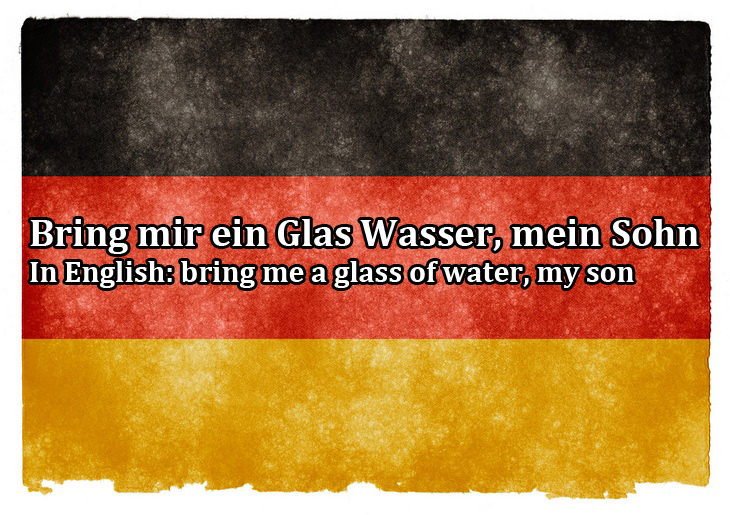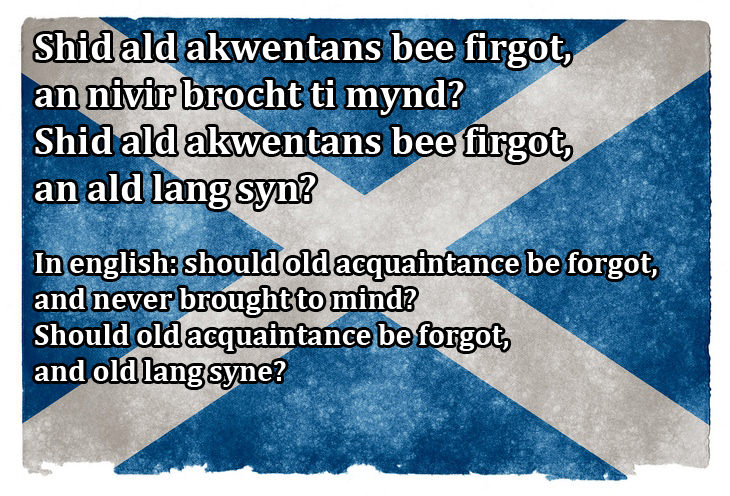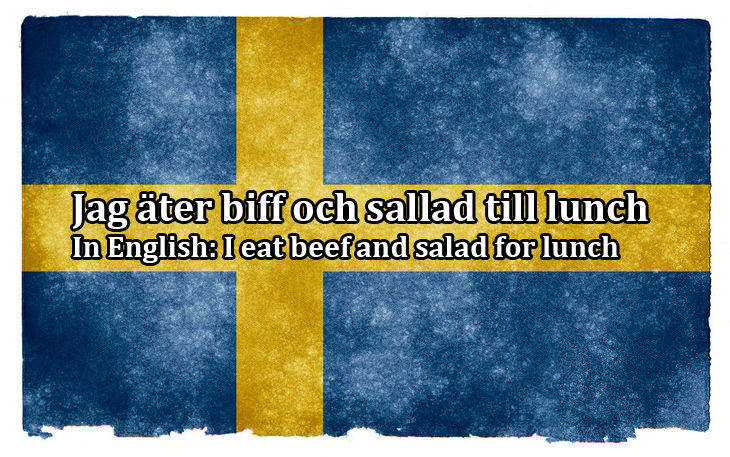





Image source: Nicolas Raymond

QUIZ: Can You Pass This 4th-Grade Spelling Test?
Do you think you're smarter than the average 4th-grader? If so, then give this English spelling test a shot!

QUIZ: Can You Ace This Tricky Grammar Test?
Want to assess just how great your English grammar truly is? If so, then you've come to the right place!

Quiz: Can You Solve This Grammar Challenge?
Can you solve this 15 question English grammar quiz? if so, you are a grammar god!

Test Yourself: Which English Word Should You Use?
Sheep or sheeps? Definitely or definately? Do YOU know which English word to use?

When GH Says F: Why Does This Occur?
We're meeting up on the corner of history and linguistics to learn why GH is pronounced as F.

English Test: Do You Know Your Punctuation?
This punctuation quiz isn't easy, it'll throw 10 sentences at you that are either wrong or don't need any further punctuation...
 44:39
44:39
Full Documentary: The Fascinating History of the Dark Ages
Watch this fascinating documentary that sheds some great insight into how Rome fell, and what the Dark Ages actually consisted of.

Why You Might Want to Consider Switching to a Futon Bed
In this article, we will learn what a real futon bed is and if it is better for spine health than a western bed.

These 24 Fascinating Photographs Will Surprise & Amaze You
Here are 24 of the most amazing and surprising photographs ever seen on the internet!

News That Inspires: Positive Stories From Around the World
There are so many good things happening in the world. Here’s a look at some of the most inspiring news updates to brighten your day.

Believe These Myths to Be True? The Facts Are Surprising
Read through 11 common misconceptions, you've likely thought were facts.

22 Of the Weirdest & Wackiest Facts Most People Don't Know
Did you know that Australia was once known as ‘New Holland’? Discover many such weird but true facts here.

25 Incredibly Rare Vintage Pictures You’ll Love to See
It’s time to travel back in time and enjoy some fascinating historical pictures.

The 10 Greatest British Monarchs in History
Do you know about the greatest monarchs in British history? Don't fret if you don't, because you're about to learn all about them right now.

I Can't Wait to Try These Exciting Kitchen Inventions
Whether you like cooking of not, you'll surely appreciate these ingenious kitchen gadgets designed to make life easier.

Fascinating Photos: Actors vs. the Real People They Played
Take a look yourself and make your own mind as to how faithful the actors were to the people they played in movies.

10 Richest People From History You Should Know About
A look at 10 of the richest people that lived in history. From emperor Mansa Musa to Muammar Gaddafi, it presents the insane sums these people had.

The Extraordinary Lives of the Oldest Record Breakers
From marathoners and skydivers to body-builders and pianists, here are some of the world’s oldest record-breakers.

20 Mind-Boggling Food Facts to Nourish the Mind
Here are 20 mind-boggling factoids about the foods we eat every day.
 12:47
12:47
The True Story of Oppenheimer and the Atomic Bomb
Before you head to the theaters to watch Christopher Nolan’s ‘Oppenheimer’, find out the real story of the “father of the atomic bomb”.
 5:33
5:33
White Rose: the Brave Student Resistance to Nazi Germany
White Rose was a secret student organization that opposed the Nazi rule, here is the story of this brave organization...

Send Christmas Wishes to Your Friends This Festive Season
Christmas is the most wonderful time of the year. Send this video to your closest and dearest friends to let them know that you're thinking of them.

16 Helpful Charts and Guides Worth Saving
We’ll never get enough of useful charts, maps, and guides like these!

Beware of Ordering These (Potentially) Fake Foods
There are certain items on a restaurant's menu that should be considered with caution, and this is because they tend to be faked. Learn more here.
 2:57
2:57
'What a Wonderful World' Like You've Never Heard Before!
Listen to this hauntingly beautiful cover of the classic song “What a Wonderful World”.

5 Assassinations of World Leaders that Shook the World
Read through these five infamous assassinations of world leader shook the world.

These Photos Prove How Strange of a Country South Korea Is
The following images illustrate how strange of a place Korea is.
 2:23
2:23
This Cat Has Broken the Record for the Loudest Purr!
This Cat Has Purred Her Way Into the Record Books!

20 Weird Facts You Didn't Know You Need to Know
20 Historical, modern, weird & funny facts for your enjoyment.

Historic Photos From Days of Christmas' Past...
Christmas is said to be a time of love, cheer, and human compassion. These photos may be decades-old, but the stories they tell are not much different than the stories of today.
 34:31
34:31
50 Unknown Facts About Cleopatra, the Queen of the Nile
Cleopatra is one of the most fascinating figures from history. And there’s still so many things about her you don’t know yet.
 10:15
10:15
This Man Has Taken Refuge in an Airport for 19 Years
Meet Denis Luiz de Souza, a man who, because of unfortunate circumstances, has been living in an airport for about two decades.

Mark Twain's Tips For a Better Kind of Life...
Mark Twain was not only a talented writer but a man of wise, witty words. Here are 12 of his best quotes.

I Bet You Never Knew These U.S. Geography Facts...
Do you consider yourself to be a proud American who knows all there is to know about the good ol’ U.S. of A.? We bet you didn't know these facts!

These Female Celebs Have Aged Like Fine Wine (28 Pics)
These female celebrities are aging just like fine wine.

Got a Problem? Maybe These Funny Fixes Will Inspire You!
The fixes for these problems are going to bring a huge grin to your face!

The Mysterious City of Caesars and 4 Other Mythical Places
These fascinating, but lesser-known mythical cities have captivated the imaginations of people for centuries, learn about them yourself

A Few Beautiful Thoughts About True Friendship...
We should never forget the gift that is true friendship...
 13:08
13:08
The Epic Battle of Stalingrad Comes to Life
One of the most epic battles in history, and the biggest of WWII comes to life and explored in this in-depth video.

8 Infamous Crimes That Left a Mark on History
These true crime stories became so sensational that they changed the culture and went to be remembered in history.

115 Incredible Facts You Never Knew About Cats!
Cats are the most popular animal on the internet by far, so we made this extensive list of cat facts that will turn you into a feline expert!

12 Beautiful Quotes that'll Make You Smile and Grin
If you want a smile, you've reached the right place...

The Grisly Origins of Madame Tussaud's Wax Empire!
Ever wondered how Madame Tussaud's became the most famous waxmaker in history? Well, if you did, you need wonder no more!

Baby Boomers, Do You Remember These Vintage Products?
If you are member of the baby boomer generation, you may just remember these nostalgic products from your childhood.
 3:41
3:41
Decency Test: Would People Cheat a Blind Man Out of Money?
If a blind man came up to you and asked for your help with his winning lottery ticket, how would you react?
 19:08
19:08
What People Need When the End Is Nigh: A Profound Talk
BJ Miller is a palliative care physician with some amazing insights. Discussing what happens to our thoughts as we pass away, he shares some profound thoughts.

12 of the Most Inexplicably Weird Things Ever Discovered
In the world, a lot of discoveries often raise more questions than they answer. Here are 12 of the most inexplicably weird things and places ever found.


